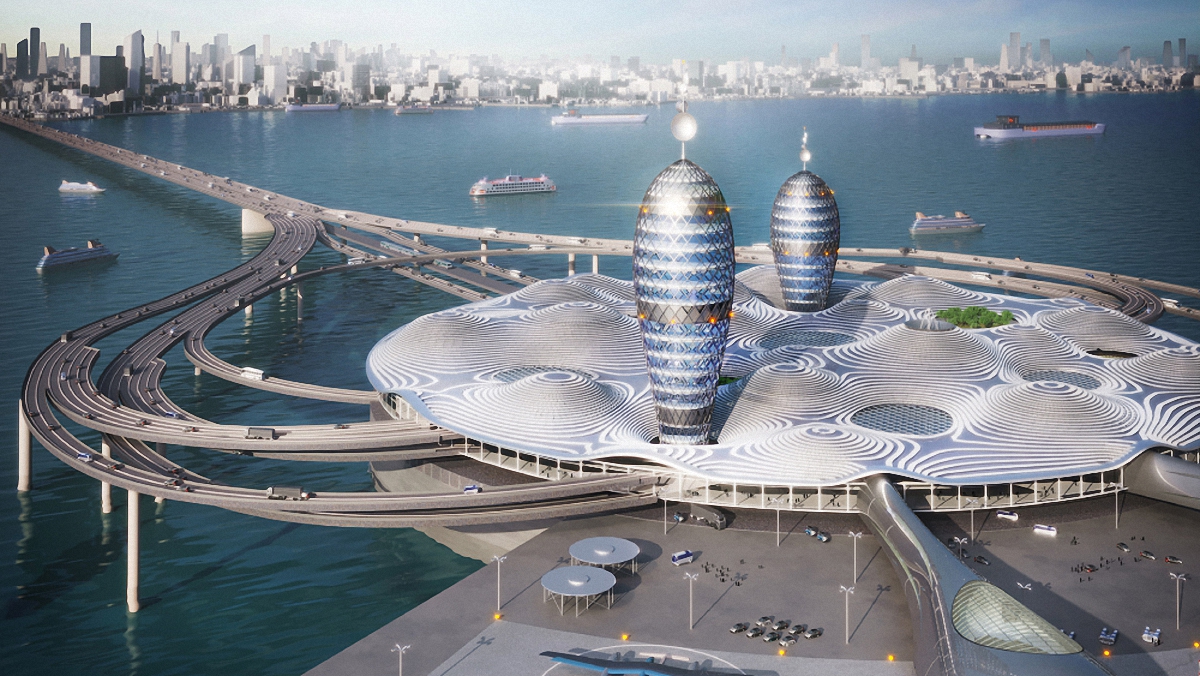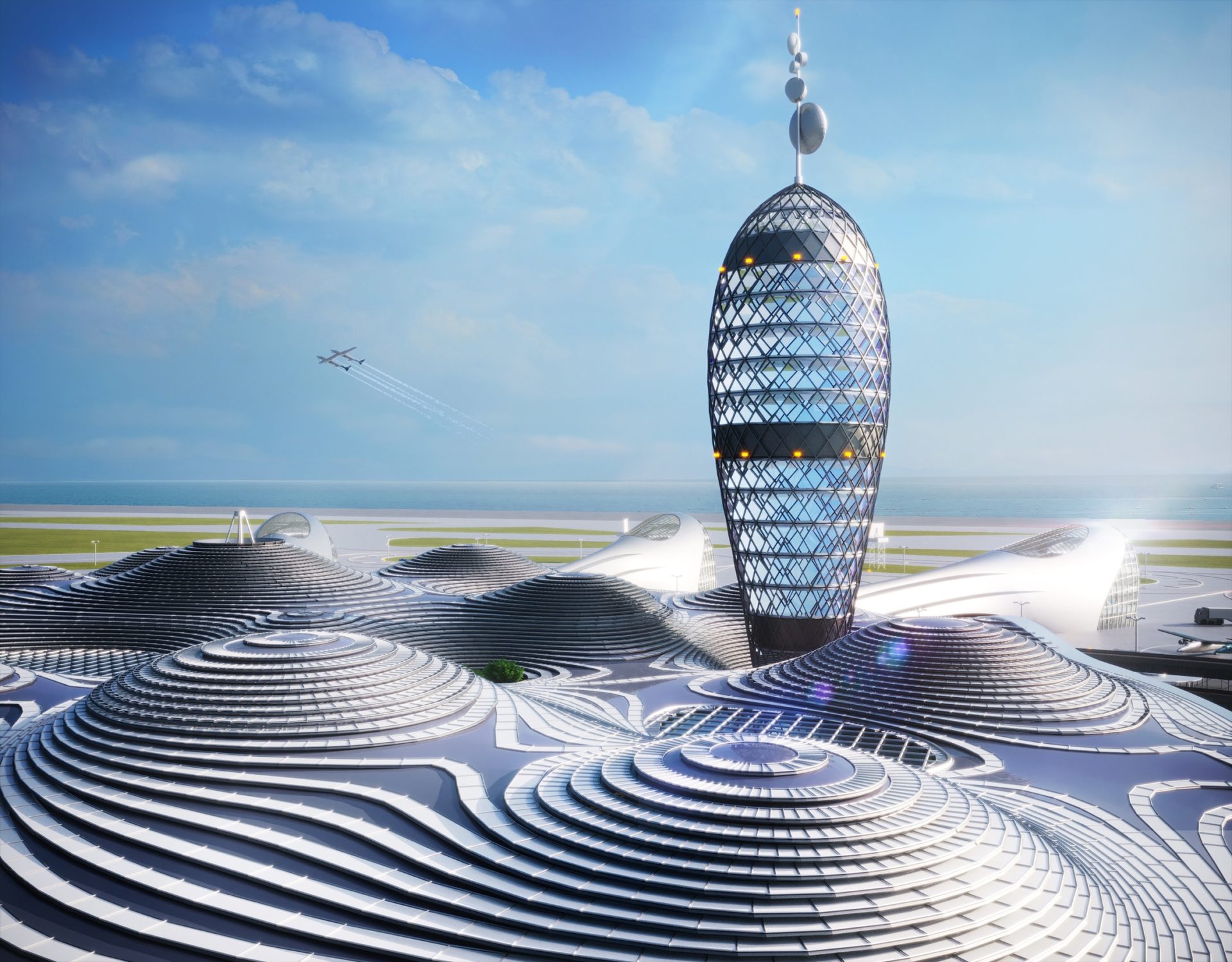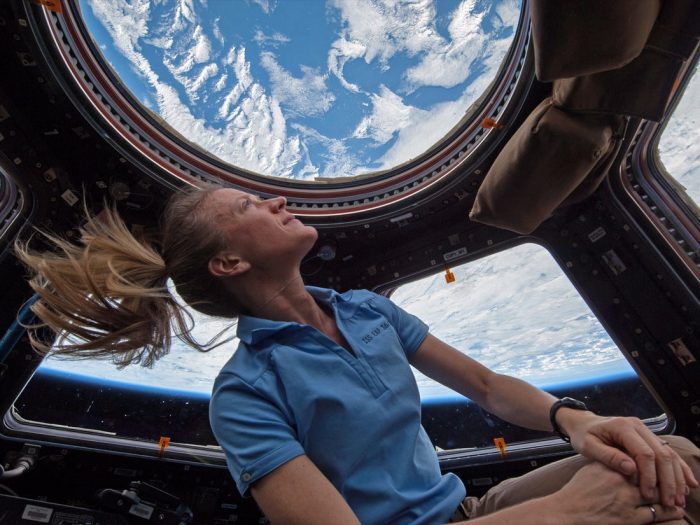Devised by the Space Port Japan Association (SPJ) –– in coordination with Dentsu, Canaria and Noiz –– the striking digital renderings of Spaceport City imagine a new kind of transportation hub focused on the takeoff and landing of space-bound vessels. But what sets the layout apart is its integration with other forms of transportation more commonly experienced today, from cars to boats. The proposed hub would be built above the water and extend out from an expansive cityscape.

Spaceport City would also serve as a kind of business center. The sheer amount of square footage makes the venue ripe for holding conferences, staging fashion shows and housing businesses related to space engineering or education.
Unlike the conventional vertical rocket launchers most of us associate with space travel, Spaceport City is designed for suborbital spaceships that look more like planes and take off horizontally.

Commercial suborbital spaceflights are not yet available, but companies including Blue Origin and Virgin Galactic are testing suborbital spacecraft for space tourism. Virgin Galactic is leading the way in the development of horizontal-launch spacecraft — the type that Spaceport City is designed for. The company has flown crewed test flights and has already signed up over 600 passengers for the yet unscheduled $250,000-per-seat, 90-minute spaceflight, which it hopes to launch as early as next year.
While the spaceflight will take less than two hours, those hoping to shoot for the stars will undergo three days of training before they take off, says Virgin Galactic.

Noiz Architects’ plans for Spaceport City include facilities to help space tourists get prepared, says Kuczma. Space travel can be physically and mentally challenging, she says, so health check-ups in the medical clinic and training at the gym or space academy may be part of pre-flight preparations.














